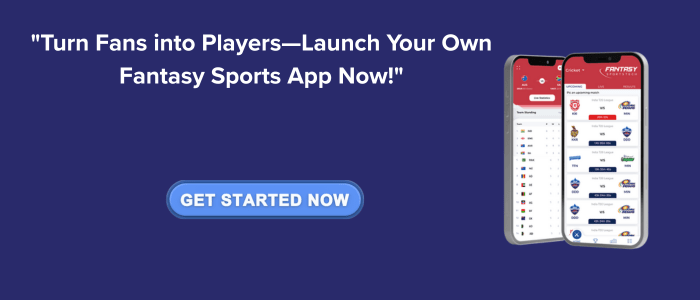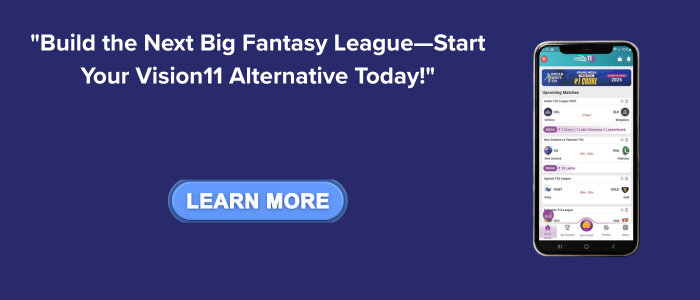In the dynamic world of digital entertainment and sports, fantasy apps have emerged as a revolutionary force, redefining the way fans engage with their favorite games. Among these, Vision11 Fantasy has gained remarkable popularity due to its user-friendly interface, unique features, and real-time engagement. If you’re looking to develop a fantasy app like Vision11, you’re stepping into a lucrative market full of opportunities. This guide will walk you through every essential step, from concept to launch, while maintaining a balance of complexity and variation to ensure engaging and authentic content.
Understanding the Fantasy Sports Ecosystem
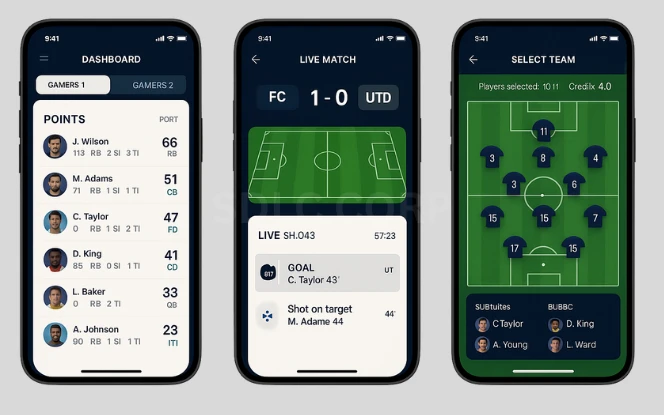
Before jumping into development, it’s crucial to understand what makes fantasy sports apps successful. These platforms allow users to create virtual teams made up of real-life players. Points are awarded based on these players’ real-world performances. The app’s success hinges on accuracy, real-time updates, and a seamless user experience.
Market Analysis and Vision11's Success Story

Vision11 Fantasy gained traction by offering low-competition contests, referral bonuses, and a highly interactive user interface. It tapped into the emotional investment sports fans already have and offered them a way to leverage their knowledge to win rewards. Their monetization strategies include entry fees, advertisements, and premium memberships. Understanding this business model is essential before you embark on your own journey to develop a fantasy app like Vision11.
Ideation and Planning
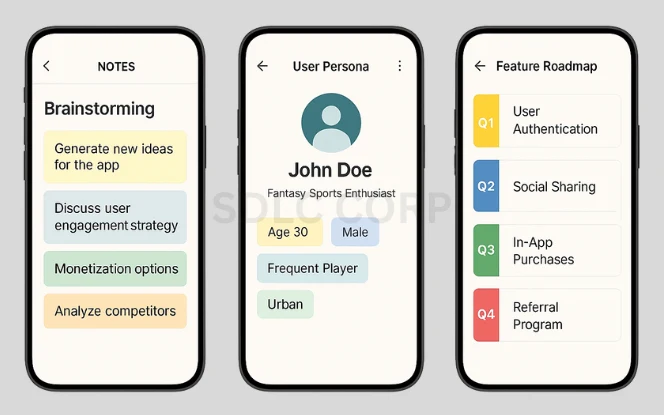
The first step in fantasy app development is conceptualization. This involves:
- Identifying your target audience (e.g., cricket fans, football enthusiasts)
- Selecting the type of sports to cover
- Outlining core features such as team creation, live scores, and point tracking
- Planning monetization models
An essential part of this phase is conducting a SWOT analysis to determine your app’s strengths, weaknesses, opportunities, and threats.
How to Start a Fantasy Sports Business
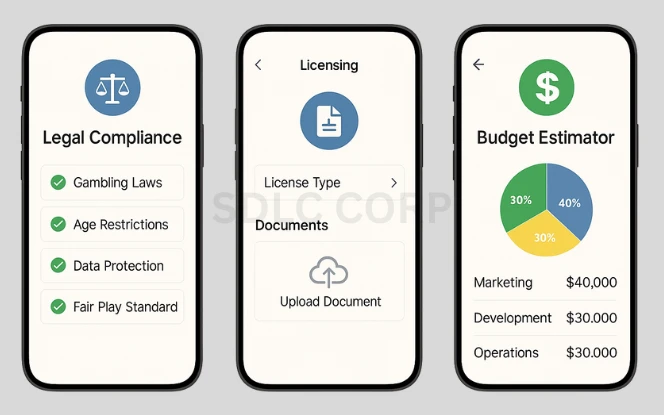
Starting a fantasy sports business requires more than just coding knowledge. Here are the primary considerations:
- Legal Compliance: Fantasy sports are considered a game of skill in many countries, including India. However, compliance with local laws is crucial.
- Licensing: Obtain necessary licenses like the RNG certification if you are planning to include cash contests.
- Market Research: Understand competitors like Dream11, MyTeam11, and of course, Vision11 Fantasy.
- Budget Planning: Determine your budget for app development, marketing, and operations.
- Team Formation: Hire a reliable team of developers, designers, and QA testers.
A robust business plan lays the groundwork for a successful fantasy sports venture.
Key Features Your Fantasy App Must Have
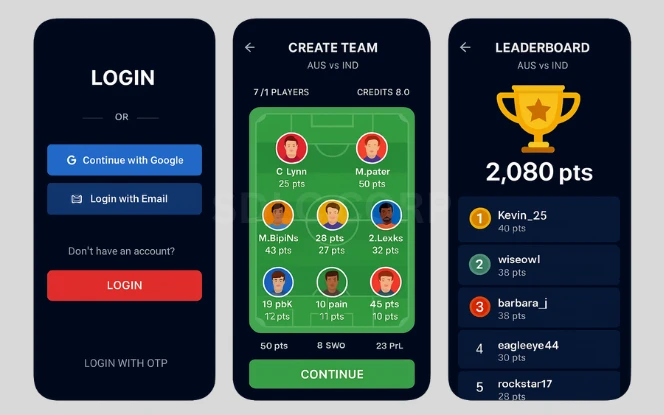
If you want to develop a fantasy app like Vision11, your platform should offer the following features:
- User Registration/Login: Easy onboarding via email, phone number, or social media.
- Profile Management: Allows users to edit personal information, track earnings, and transaction history.
- Match Listings: Display upcoming matches and available contests.
- Team Creation: Users must be able to build their fantasy teams from real-world players.
- Live Match Updates: Provide real-time fantasy points update for user engagement.
- Leaderboard: Show rankings based on team performance.
- Wallet Integration: Secure deposit and withdrawal methods.
- Referral System: Encourage users to invite friends for rewards.
Choosing the Right Tech Stack
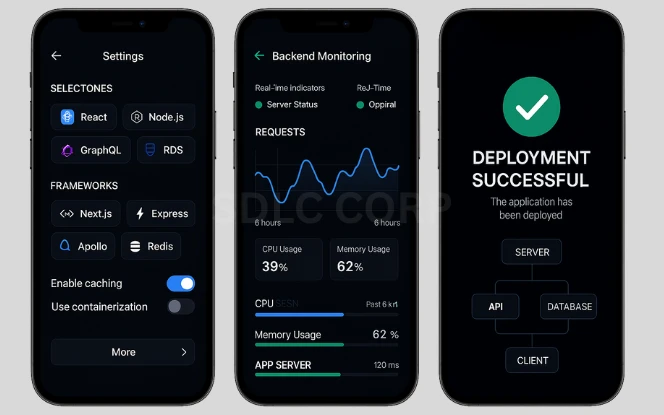
The technology stack you choose will directly affect your app’s performance and scalability. Common technologies include:
- Frontend: React Native or Flutter for cross-platform compatibility
- Backend: Node.js or Python
- Database: MongoDB or PostgreSQL
- Real-time Updates: Firebase or Socket.IO for real-time fantasy points update
- Payment Gateway: Razorpay, Paytm, or Stripe for secure transactions
Make sure the tech stack is scalable to handle increasing user traffic during major sports events.
UI/UX Design Principles

A well-designed user interface is vital for user retention. Focus on:
- Clean Layouts: Ensure the navigation is intuitive
- Minimalistic Design: Avoid clutter for better usability
- Color Psychology: Use colors that resonate with the sport and build excitement
- User Flow Optimization: Reduce the number of steps to create a team or join a contest
User feedback loops should be implemented during the design phase to ensure the final product aligns with user expectations.
Backend Development and API Integration
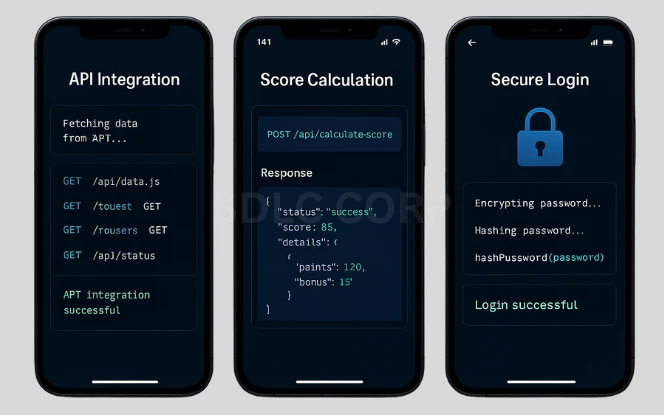
Backend development is the backbone of any fantasy sports app. This includes:
- Authentication: Secure login methods
- Match Data: Integration with live sports APIs like SportRadar or CricAPI
- Scoring Engine: To calculate real-time fantasy points update accurately
- Notification System: To send alerts and updates to users
A strong backend ensures that your app remains stable even under high traffic.
Testing and Quality Assurance
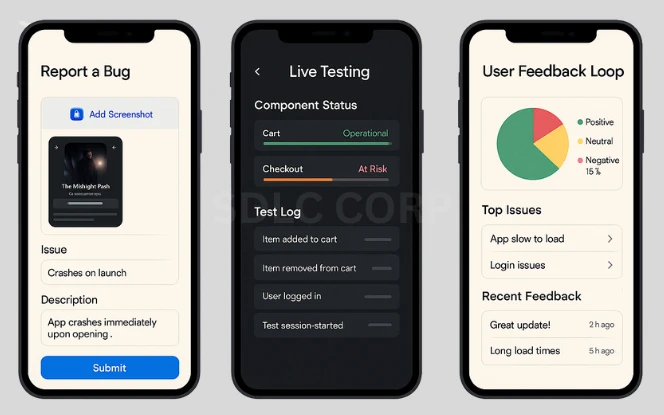
Once the app is developed, rigorous testing is crucial. This includes:
- Unit Testing: Check individual components
- Integration Testing: Ensure different modules work together
- Load Testing: Evaluate performance under peak usage
- User Testing: Gather feedback from a small user base before full-scale launch
Quality assurance helps in identifying bugs and enhancing the user experience.
Launch Strategy
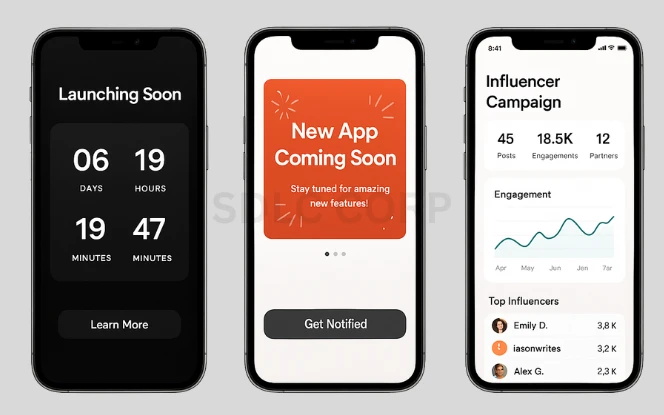
A well-executed launch strategy can make a significant difference. Consider the following:
- Pre-Launch Marketing: Create buzz through social media, teaser videos, and blogs
- Beta Testing: Release a beta version to a limited audience
- Official Launch: Coordinate with influencers, run promotions, and utilize paid advertising
Make sure customer support is active and responsive during the initial days of launch.
Post-Launch Maintenance and Updates
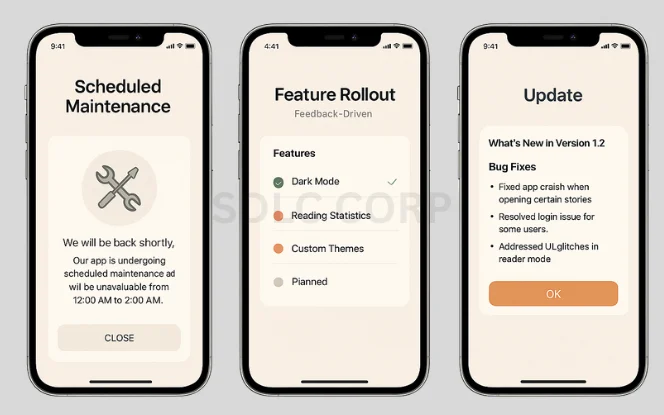
The journey doesn’t end at the launch. Continuous updates and maintenance are necessary to:
- Fix bugs
- Introduce new features
- Improve UI/UX
- Ensure server uptime
Regular updates keep the user base engaged and reduce the churn rate.
Marketing and User Acquisition
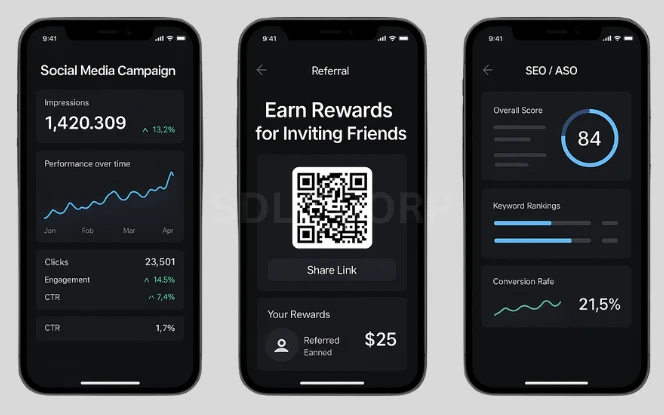
An effective marketing strategy is essential for your app to succeed:
- SEO and ASO: Optimize your website and app store listing
- Social Media Campaigns: Engage with your audience
- Influencer Marketing: Collaborate with sports influencers
- Referral Programs: Motivate users to bring in more users
Data analytics should be used to track campaign performance and optimize marketing efforts.
Revenue Generation and Monetization Strategies
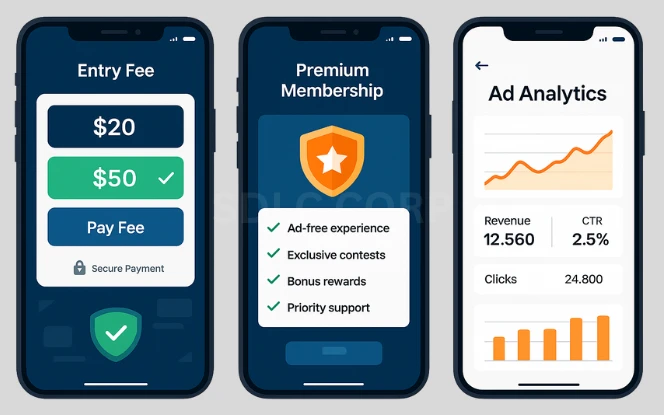
There are several ways to earn revenue from a fantasy app:
- Entry Fees: Primary source of income
- In-App Ads: Partner with brands to show ads
- Premium Memberships: Offer exclusive features for paid members
- Sponsorships: Collaborate with sports brands
Studying the Vision11 Fantasy business model can provide insights into what works and what doesn’t.
Challenges in Fantasy App Development
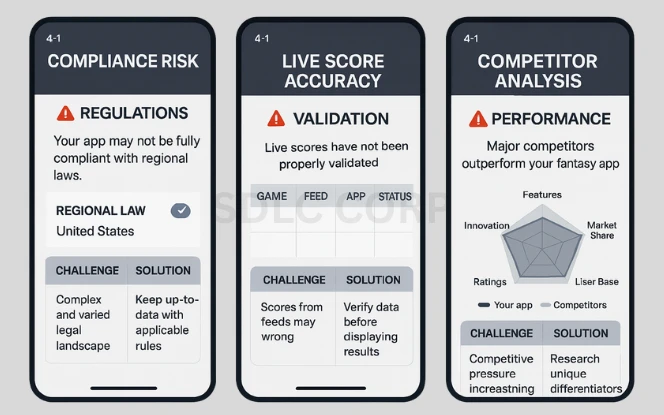
Some of the common challenges include:
- Legal Hurdles: Navigating varying laws in different regions
- Data Accuracy: Ensuring real-time fantasy points update without delays
- High Competition: Standing out among numerous apps
- User Trust: Building credibility with new users
Overcoming these challenges requires strategic planning and robust execution.
Final Thoughts
To develop a fantasy app like Vision11 is to enter a competitive yet rewarding industry. The process involves meticulous planning, skilled development, legal compliance, and strategic marketing. The success of Vision11 Fantasy stands as a testament to what’s possible with the right approach. from understanding how to start a fantasy sports business to mastering real-time fantasy points update, every detail matters. Whether you’re a sports enthusiast turned entrepreneur or an enterprise exploring new verticals, the world of fantasy sports offers boundless potential. Invest in quality development, stay updated with trends, and always keep your user at the center of every decision.
Your fantasy sports app could be the next big hit in the digital sports entertainment space.
Contact us today to turn your vision into reality.
FAQ's
1. Is It Legal to Operate a Fantasy Sports App in India?
Yes, fantasy sports are considered a game of skill and are legal in India under certain jurisdictions. However:
- Avoid operating in restricted states like Assam, Odisha, Telangana, and Sikkim
- Ensure compliance with IT laws, RNG certification, and data protection norms
- Consult a legal advisor before launch
2. How Much Does It Cost to Develop a Fantasy App Like Vision11?
A basic fantasy app can cost $20,000–$40,000, while a fully-featured, scalable solution may go up to $100,000 or more. Cost factors include:
- Number of supported sports
- Real-time API integrations
- Platform choice (Android/iOS/Web)
- Custom design and backend scalability
3. What Features Are Essential for a Successful Fantasy Sports App?
Key features include:
- User Login & KYC
- Team Creation Interface
- Live Match Updates & Scoring
- Leaderboard
- Wallet & Payment Gateway
- Referral Bonus System
- Admin Dashboard
Each feature must be optimized for speed, usability, and reliability.
4. Which Technology Stack is Ideal for Fantasy App Development?
Recommended tech stack:
- Frontend: Flutter / React Native
- Backend: Node.js / Django (Python)
- Database: MongoDB / PostgreSQL
- Live Updates: Firebase / Socket.IO
- Payments: Razorpay / Stripe / Paytm
5. How Can I Get Real-Time Match and Player Data?
Use trusted third-party sports APIs like:
- SportRadar
- CricAPI
- Data Sports Group
These services provide real-time data for scoring, player stats, and match info.
6. What Monetization Options Are Available?
Popular monetization methods:
- Entry Fees (main revenue source)
- In-App Ads
- Premium Subscriptions
- Referral Bonuses
- Brand Sponsorships
7. What Are the Biggest Challenges in Fantasy App Development?
Common challenges include:
- Navigating legal restrictions
- Accurate real-time data handling
- Building user trust
- Handling large traffic spikes during major matches
- Standing out in a crowded market
8. What’s the First Step to Launching a Fantasy Sports Business?
Start with:
- Conducting market research
- Defining your target audience and USP
- Assembling a development team or hiring an agency
- Preparing legal documentation
- Planning a beta launch and marketing roadmap

